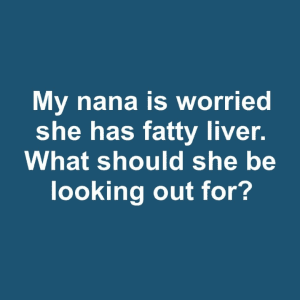Strokes are serious, life-threatening events that can have devastating consequences if not addressed promptly. As we age, particularly between the ages of 45 and 65, it becomes increasingly important to recognize the risks and warning signs associated with strokes. In this article, we’ll explore the different types of strokes, who is most at risk, and what you can do to protect yourself.

What is a Stroke?
A stroke occurs when the blood supply to the brain is interrupted, usually due to blood clots or blocked arteries. This interruption prevents brain cells from receiving the oxygen and nutrients they need to survive, leading to cell death. The severity of a stroke can vary depending on how long the brain goes without oxygen and which parts of the brain are affected.
Mini-Strokes: A Warning Sign You Shouldn’t Ignore
A mini-stroke, also known as a transient ischemic attack (TIA), is a temporary blockage of a blood vessel in the brain. While the symptoms of a TIA may disappear within minutes or hours, it serves as a critical warning sign. Shockingly, 4 in 10 people who experience a TIA will have a major stroke later on, often within a short period. This makes recognizing and addressing TIAs essential for preventing more serious health complications.
Major Strokes: The Need for Immediate Action
Unlike a TIA, a major stroke can cause severe and long-lasting symptoms. The damage from a major stroke can lead to permanent disability or even death if not treated quickly. Symptoms may include sudden numbness or weakness in the face, arm, or leg, especially on one side of the body, confusion, trouble speaking, difficulty seeing, or loss of balance. The key to minimizing the impact of a major stroke is to seek medical help immediately. The sooner treatment is administered, the better the chances of recovery.

Who is at Risk for a Stroke?
While strokes can happen to anyone, certain risk factors increase your likelihood of experiencing one. Some of these risk factors are within your control, while others are not. Here’s what you need to know:
- Age: People over 45 are more likely to suffer from a stroke, and the risk increases with age.
- Weight: Being overweight or obese can increase your risk of stroke due to the strain it places on your cardiovascular system.
- Smoking: Smoking damages blood vessels and can lead to the formation of blood clots, increasing the risk of stroke.
- High Cholesterol: High levels of cholesterol can cause plaque to build up in your arteries, leading to blockages that can result in a stroke.
- High Blood Pressure: Hypertension is a leading cause of stroke as it puts extra strain on your heart and arteries.
- Diabetes: People with diabetes are at a higher risk of stroke due to damage to the blood vessels.
- Atrial Fibrillation: This irregular heartbeat can cause blood clots to form in the heart, which can then travel to the brain and cause a stroke.
Treatment and Recovery: What to Expect After a Stroke
The treatment for a stroke depends on the type and severity of the event, as well as which part of the brain is affected. The primary goal is to restore blood flow to the brain as quickly as possible. This can be achieved through medication, such as clot-busting drugs, or in some cases, surgery may be required to remove the blockage.
Long-Term Care and Prevention
After the initial treatment, ongoing care is crucial to prevent future strokes and aid in recovery. This may involve:
- Medication: To prevent blood clots, lower blood pressure, or reduce cholesterol levels.
- Surgical Interventions: In some cases, surgery may be needed to improve blood flow to the brain.
- Rehabilitation: Depending on the severity of the stroke, you may need support to manage lingering effects such as speech or mobility issues.
Understanding FAST: The Key to Saving Lives
When it comes to stroke, time is of the essence. That’s why it’s essential to remember the acronym FAST:
- F – Face: Check if one side of the face is drooping.
- A – Arms: See if the person can raise both arms or if one arm drifts downward.
- S – Speech: Listen for slurred or strange speech.
- T – Time: If you observe any of these signs, call emergency services immediately.
Conclusion: The Importance of Awareness and Action
Understanding the risks and warning signs of stroke is crucial, especially as you age. By recognizing the symptoms early and acting quickly, you can significantly improve your chances of recovery and reduce the risk of long-term complications. Remember, strokes can be life-threatening, but with the right knowledge and prompt action, you can protect yourself and those you love.


